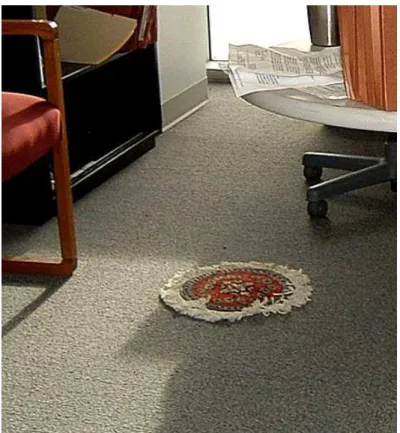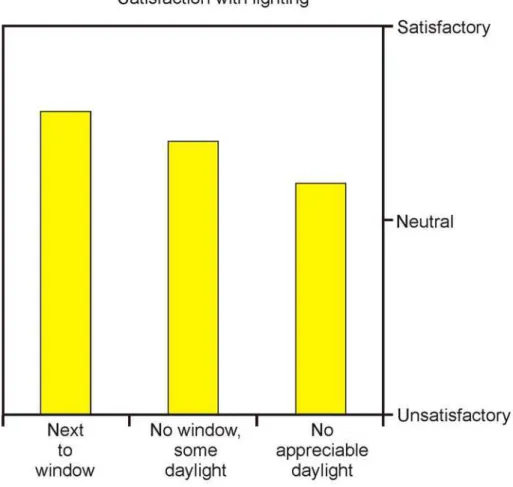Publisher’s version / Version de l'éditeur:
HK-BEAM Society Newsletter, Winter, pp. 6-8, 2005-01-01
READ THESE TERMS AND CONDITIONS CAREFULLY BEFORE USING THIS WEBSITE.
https://nrc-publications.canada.ca/eng/copyright
Vous avez des questions? Nous pouvons vous aider. Pour communiquer directement avec un auteur, consultez la
première page de la revue dans laquelle son article a été publié afin de trouver ses coordonnées. Si vous n’arrivez pas à les repérer, communiquez avec nous à PublicationsArchive-ArchivesPublications@nrc-cnrc.gc.ca.
Questions? Contact the NRC Publications Archive team at
PublicationsArchive-ArchivesPublications@nrc-cnrc.gc.ca. If you wish to email the authors directly, please see the first page of the publication for their contact information.
NRC Publications Archive
Archives des publications du CNRC
This publication could be one of several versions: author’s original, accepted manuscript or the publisher’s version. / La version de cette publication peut être l’une des suivantes : la version prépublication de l’auteur, la version acceptée du manuscrit ou la version de l’éditeur.
Access and use of this website and the material on it are subject to the Terms and Conditions set forth at
The importance of indoor environment quality to green buildings
Newsham, G. R.
https://publications-cnrc.canada.ca/fra/droits
L’accès à ce site Web et l’utilisation de son contenu sont assujettis aux conditions présentées dans le site LISEZ CES CONDITIONS ATTENTIVEMENT AVANT D’UTILISER CE SITE WEB.
NRC Publications Record / Notice d'Archives des publications de CNRC:
https://nrc-publications.canada.ca/eng/view/object/?id=07db69e7-e823-460d-95b9-c293872da43b https://publications-cnrc.canada.ca/fra/voir/objet/?id=07db69e7-e823-460d-95b9-c293872da43b
N a t i o n a l R e s e a r c h C o u n c i l C a n a d a
Importance of Indoor Environment
Quality to Green Buildings
A version of this document is published in / Une version de ce document se trouve dans : HK-BEAM Society Newsletter, Winter, 2005
N R C C - 4 8 6 1 6
N e w s h a m , G . R .
2005
The Importance of Indoor Environment Quality to Green Buildings
Dr. Guy Newsham, National Research Council Canada
The HK-BEAM assessment method, like other green building assessment methods such as LEED (North America, www.usgbc.org) and BREEAM (UK,
www.breeam.org), includes credits for Indoor Environment Quality (IEQ)
features. The number of credits available for IEQ is often equal to or greater than the number of credits available for reduced energy use, reduced water use, or choosing more environmentally responsible materials. This recognizes the fact that, if the indoor environment does not support the functioning of the people who occupy it, the building will not be sustainable.
If the indoor environment is unpleasant, people will take steps to improve things. This might mean adding supplementary task lighting, fans, or heaters to the space, or preventing a building system from working as designed (see Figure 1); all of these things may increase the energy use over expected levels. In some cases, major building retrofits may be required to address IEQ problems, adding to the use of building materials and embodied energy.
In commercial buildings, an uncomfortable environment can also have negative effects on the productivity of the organization in the premises.. In a recent field study we collected physical and questionnaire data at 779 open-plan office workstations in 9 buildings across North America (
http://irc.nrc-cnrc.gc.ca/ie/cope/index_e.html). Our results showed that people with higher
environmental satisfaction also had higher job satisfaction. This is important because there is growing evidence that higher job satisfaction is linked to other outcomes important to organizational productivity, such as reduced number of employees voluntarily leaving their jobs (turnover), improved safety, improved customer satisfaction, and increased return on assets.
Are the occupants of green buildings necessarily more satisfied because of the consideration of IEQ credits? The Center for the Built Environment at UC Berkeley has recently explored this question. They have data from an on-line satisfaction survey of more than 27,000 people in over 180 buildings. They divided their database into two samples: 20 green buildings, and over 150 “non-green” buildings, and then compared the average satisfaction data in each sample; the results are very interesting
(http://www.cbe.berkeley.edu/research/pdf_files/ULI_June2005.pdf). General
workplace satisfaction was no higher in green buildings. Ratings of thermal comfort and air quality were generally higher in the green building sample; nonetheless, for thermal comfort in particular, there were green buildings that were rated worse than the average non-green building. Satisfaction with lighting and acoustics were, on average, the same in green and non-green buildings. Some green building design features may work against creating good IEQ. Green building assessment methods provide credits for daylight and outside
views, and the results from our field study research reinforce that these are important contributors to satisfaction (see Figure 2). However, one design measure that increases access to daylight in open-plan office buildings, lower panels between workstations, reduces speech privacy, which may decrease workplace satisfaction (see Figure 3). In addition, lighting quality in green buildings may be compromised by measures to save energy: choosing light levels at the low end of recommended practice, or incorporating poorly commissioned automatic lighting controls, for example.
This points to a danger in green building assessment methods: the temptation to concentrate on design aspects for which credits are available, while neglecting other practices for good building design. HK-BEAM’s credit structure is broader in scope than LEED’s. However, no rating scheme can or should have credits for every aspect of building design and operation associated with success. The responsibility remains with the design team to take the broadest possible
approach to good design, whether their green building assessment method gives them credit for it or not. Remember, green buildings that perform poorly will not encourage the use of green practices in future projects.
The green building movement is encouraging more consideration of building performance at the initial design stage, and this is a good thing. However, detailed post-occupancy evaluations (POEs) to test assumptions about good design are rarely done. POEs combine occupant questionnaires with data on the physical conditions and performance of a building. Conducting systematic POEs of buildings, green and non-green, can help identify which design features
consistently contribute to positive outcomes. Such information can contribute to future versions of HK-BEAM and other assessment methods to better ensure a quality built environment that is truly sustainable.
Figure 1. The underfloor air distributions system in this building created
unpleasant cold draughts. The occupants reacted by covering the vent with this attractive carpet!
Figure 2. Our field study data from open-plan offices shows a significant relationship between workstation proximity to windows and satisfaction with lighting.
Figure 3. In this office, the low panels between workstations provide access to daylight and view for occupants in the interior. However, these low panels provide little acoustic or visual privacy.


